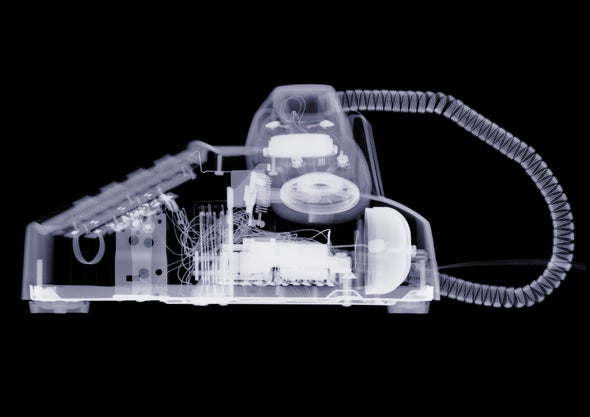This basic ability gives humans a leg up on computers

“There’s a big emphasis on deep neural networks for solving these problems [of object recognition]. These are networks that require lots and lots of training to even learn a single object category, whereas the model that we investigated, a skeletal model, seems to be able to do this without this experience,” says Vladislav Ayzenberg, a doctoral student in Lourenco’s lab. “What our results show is that humans might be able to recognize objects by their internal skeletons, even when you compare skeletal models to these other well-established neural net models of object recognition.”
Next, the researchers pitted the skeletal model against other models of shape recognition, such as ones that focus on the outline. To do so, Ayzenberg and Lourenco manipulated the objects in certain ways, such as shifting the placement of an arm in relation to the rest of the body or changing how skinny, bulging, or wavy the outlines were. People once again judged the objects as being similar based on their skeletons, not their surface qualities.
“This is top-flight work, and I was very impressed with the result,” says Feldman, who was not involved in the research. “They really give empirical evidence—I would say it demonstrated more convincingly than anything I’ve previously seen that shape similarity is computed in the human mind via similarity of shape skeletons.”
One concern with the study is that the authors generated the objects specifically from skeletons rather than deriving them from shapes, either natural or human-made, covered by skin, metal, or other materials that people encounter in their day-to-day life. “The shapes that they generated are directly related to the hypothesis they’re testing and the conclusions they’re drawing,” says James Elder, a professor of human and computer vision at York University in Toronto. “If we’re interested in how important skeletons are to shape and object perception, we can’t really answer that question by only looking at the perception of skeleton-generated shapes. Because obviously in a world of skeleton-generated shapes, skeletons are probably fairly important because that’s the way those shapes were made.”
Elder suggests that while the model may explain people’s interpretation of shapes with clearly defined skeletons, such as animals or trees, it is not appropriate for all types of shapes, such as a rock or crumpled-up newspaper. Ayzenberg says that they are addressing this issue in follow-up studies using traditional shapes and naturalistic objects.
The researchers now wonder whether the skeletal model could be incorporated into deep-learning systems so that instead of exploring whether humans learn like computers, scientists could help a computer learn like a human.
“We’re optimistic that it will also speak to and inform artificial neural networks that are trying to simulate human perception,” Lourenco says. “There are shocking ways in which they break down that humans don’t, and so being informed by how humans recognize objects is also going to be very important for them.”
ABOUT THE AUTHOR(S)
Dana G. Smith
Dana Smith is a freelance science writer specializing in brains and bodies. She has written for Scientific American, the Atlantic, the Guardian, NPR, Discover, and Fast Company, among other outlets. In a previous life, she earned a Ph.D. in experimental psychology from the University of Cambridge.
